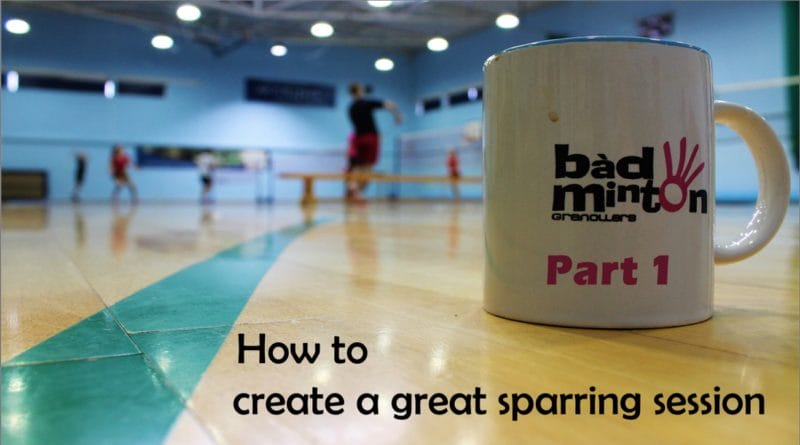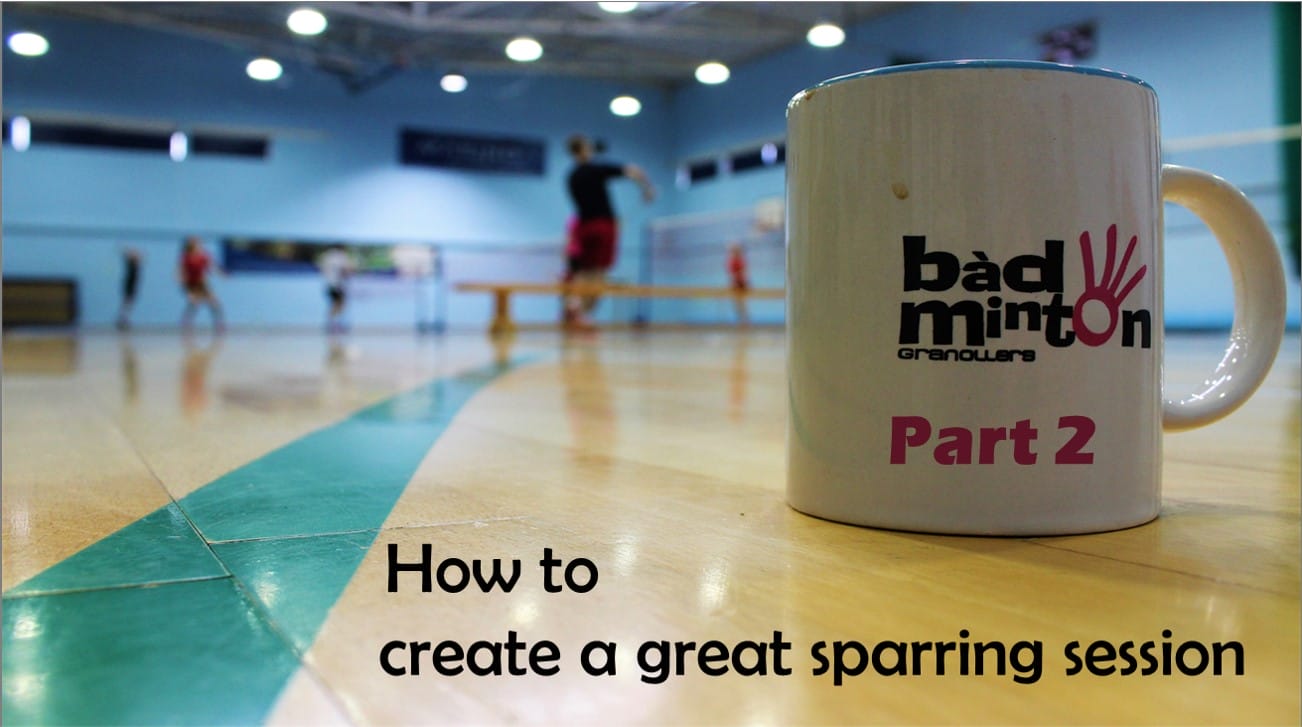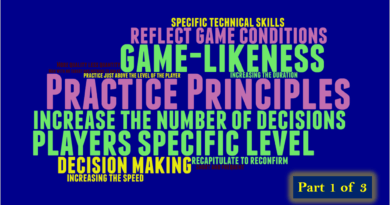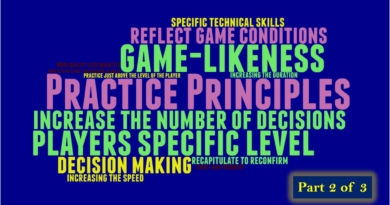The coaches guide to designing a badminton sparring session : part 1
How much preparation is required to create a great sparring session
What guidelines do you follow and you can recommend from your experiences
Here are 15 frequent questions I get asked, I wonder if you will agree with my replies
An effective session is more than just playing matches
Do you think that coaches and organisers need a set of guidelines? …. I do, as preparation is vital
Coaches and organisers talk about the need for having a sparring session, but in my opinion very few actually set out (write down). I hope these ideas will give you something o consider and maybe even challenge you. When you design sparring sessions do you consider :
- What will happen in the session
- The aim of the games that will be played
- The effect it may have on the players
- How to ensure that those attending (players & coaches) take away something from the session
Here are a list of questions that I hope will give you lots of ideas and thoughts
The questions have been gathered from the ones I’ve been asked, plus there are questions that I’ve asked other more experienced coaches.
The answers are my own thoughts or those from collective responses to my questions
Often the most interesting responses have come from organisers not necessarily coaches
Within some of the advice, there are bullet points for your consideration, questions that need answers and hard non-negotiable facts – in my view
If you are looking for 100% answers then stop reading now
You will have to make judgements for yourself: that’s coaching 🙂
– – – – – – – – – – – – – – – – – –
How would you reply, what advice would you give?
Part 1
1. What is the purpose of sparring?
2. What is the definition of competitive sparring?
3. How can I prepare so that they get the maximum from sparring?
4. When should I play more free games?
5. What is the difference between sparring and conditioned games?
6. Why do my players not like some of the games, show resistance and argue?
7. How do I cope with players who show resistance and argue?
Part 2 : Click to read 
8. Some of my players will not ‘compete’ in the games
9. What themes can I use in the games?
10. How important are ‘free play’ sessions?
11. Why use bonus points rather than deductions?
12. What themes and rules should I avoid?
13. What rules should I include?
14. Is there a list of critical elements and questions I should be using when designing the session?
15. How much coaching should be done in sparring sessions?
16 Are there any tests for the effectiveness of the sparring session?
– – – – – – – – – – – – – – – –
1. What is the purpose of sparring?
There are many reasons to incorporate sparring or gameplay (matches) into your sessions. I hope that the ones I’ve listed below are obvious to you, or are there a few that surprise you?
How often do you use sparring sessions for the purpose listed below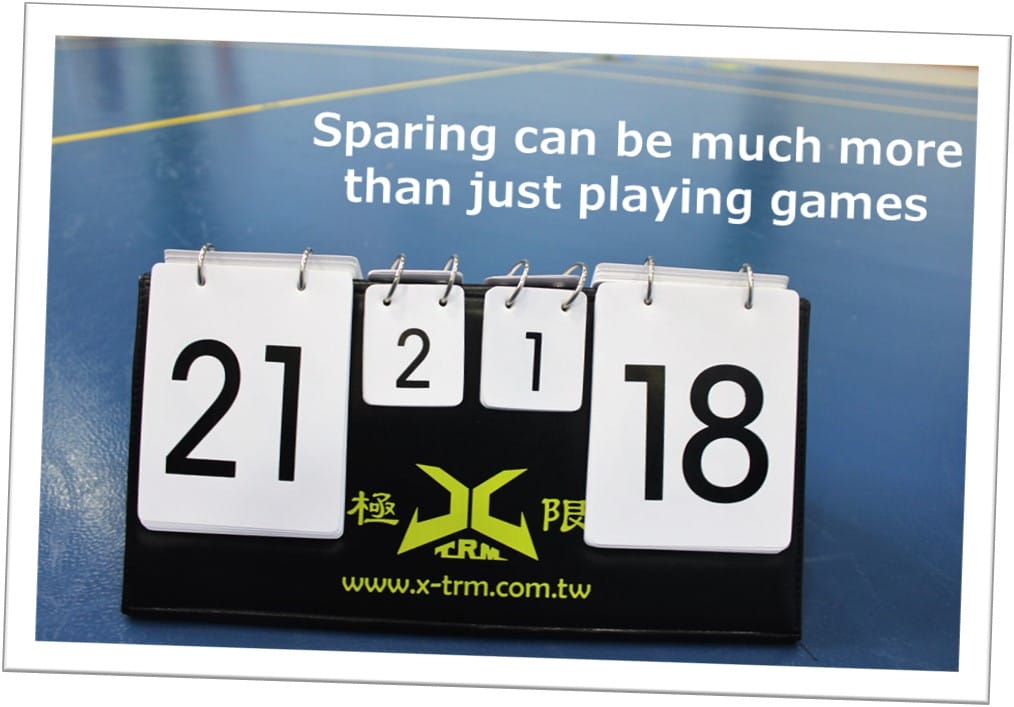
- Matchplay: preparing for a competition or a specific opponent
- Testing of new skills: it’s the best, maybe the only true ‘test’ of a new or developing skill
- Enjoyment: it must be fun to play competitive matches (do you agree 🙂 )
- Team bonding: yes, it is possible to create Team enthusiasm through competitive matches
- Tactical development: to develop general and specific strategies in a ‘safe’ controlled environment
- Tactical thinking: ideas and prompts for player-coach discussions
- Selections: I’m not sure if this is the best use, what do you think?
There is a skill (an art) in preparing the games to match these different aims,
become an expert at creating the environment you want
– – – – – – – – – – – – – – – –
2. What is the definition of competitive sparring?
I found this question difficult as in my view competition can mean many things. The purest form of competitive sparring has to be where the only rules are ‘normal ‘ rules and there is a prize worth attaining to be competed for.
I do believe that there should be a competitive element in nearly all sparring even with themed of conditioned games. This competitive element will need to be defined, may be encouraged and not restricted by rules or the environment
Sparring that isn’t competitive needs to be appraised for its usefulness
– – – – – – – – – – – – – – – –
3. How can I prepare so that they get the maximum from a sparring session?
The coach who asked this question came from a viewpoint that it would be better if the players knew what could be achieved in these sessions but was unsure how to educate them.
He’d tried explaining why sparring was important to them in a meeting style on the court but felt that they just thought of it like match play and did what they had to do to win. He mentioned that his players didn’t see the value as he did, or so he thought.
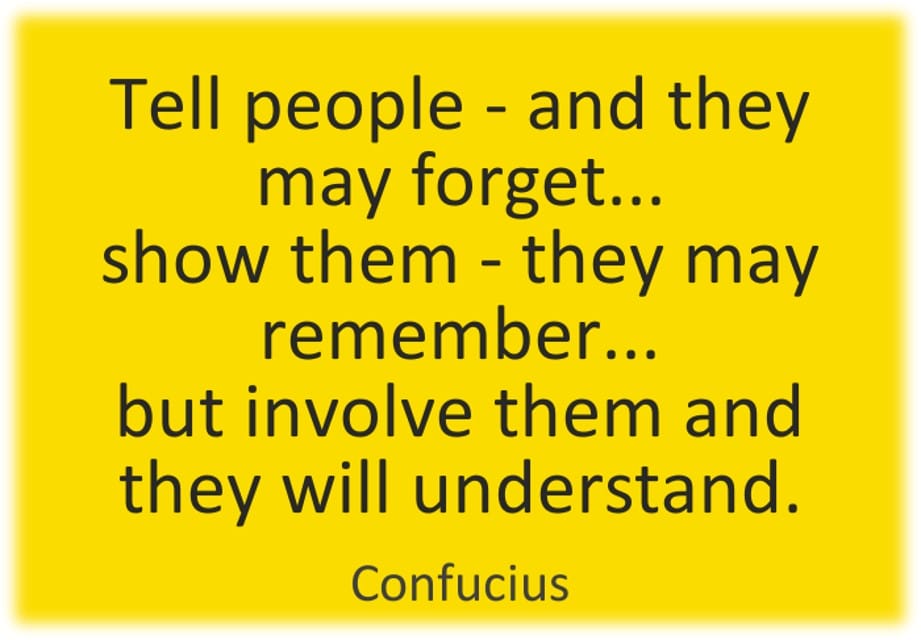 The benefits gained from sparring and the opportunities created are numerous. However, not all the benefits are immediately obvious and maybe we should blame the players as it’s a style of training that is close to competition but is still training. If you feel that your players do not understand how beneficial it could be, then have you tried these ideas below.
The benefits gained from sparring and the opportunities created are numerous. However, not all the benefits are immediately obvious and maybe we should blame the players as it’s a style of training that is close to competition but is still training. If you feel that your players do not understand how beneficial it could be, then have you tried these ideas below.
Be aware that once your players start to understand how they can use sparring sessions to help themselves then they may start to question the type of games and conditions placed on those games. This is a struggle that I think is valuable to coaches and players and should be managed not avoided.
My recommendation is to introduce the points below very early in a player coaching/training journey
Methods to help players gain an insight
– Layering: be deliberate in your methods by adding new information/experiences over a long period of time (weeks, even months)
– By doing, by engagement, by refection: all 3 are different but essential, do you agree?
– Mix up experiences: this is called interleaving. Different ‘ah-ha’ moments, don’t just repeat the same themes continuously
– Linking it to tournament experiences: ask them what they needed, then create games/situations to show that sparring can help
– Challenges and puzzles: create hidden learning points in the form of challenges within the games
– Lecturing: sitting players down and asking them to listen to you in one way but long-term it isn’t the most successful 🙁
Players who understand what could be gained from sparring are not always ‘easy’ to work with but the effort is often worthwhile
– – – – – – – – – – – – – – – –
4. When should I play more free games?
The closer the session is to competition, the more free play should be encouraged
However, it’s also a time for individual themes. Some may wish to gain confidence from winning, others from testing themselves in different parts of their game. There will also be those players who want to prepare themselves for competition against a specific player.
You will need to know how to encourage each player so that they can achieve each of their aims during the free play sparring.
There are also other times when free play is important. Sometimes your group may need a break from all the ‘coaching’.
Try to be sensitive to the overall mood of the players and be prepared to play games with the intention of having fun through competition. Please remember that badminton is a game and games need to be played.
It could be argued that sparring matches are nver just ‘play’
as every player will have internal thoughts, aims and desires
– – – – – – – – – – – – – – – –
5. What is the difference between sparring and conditioned games?
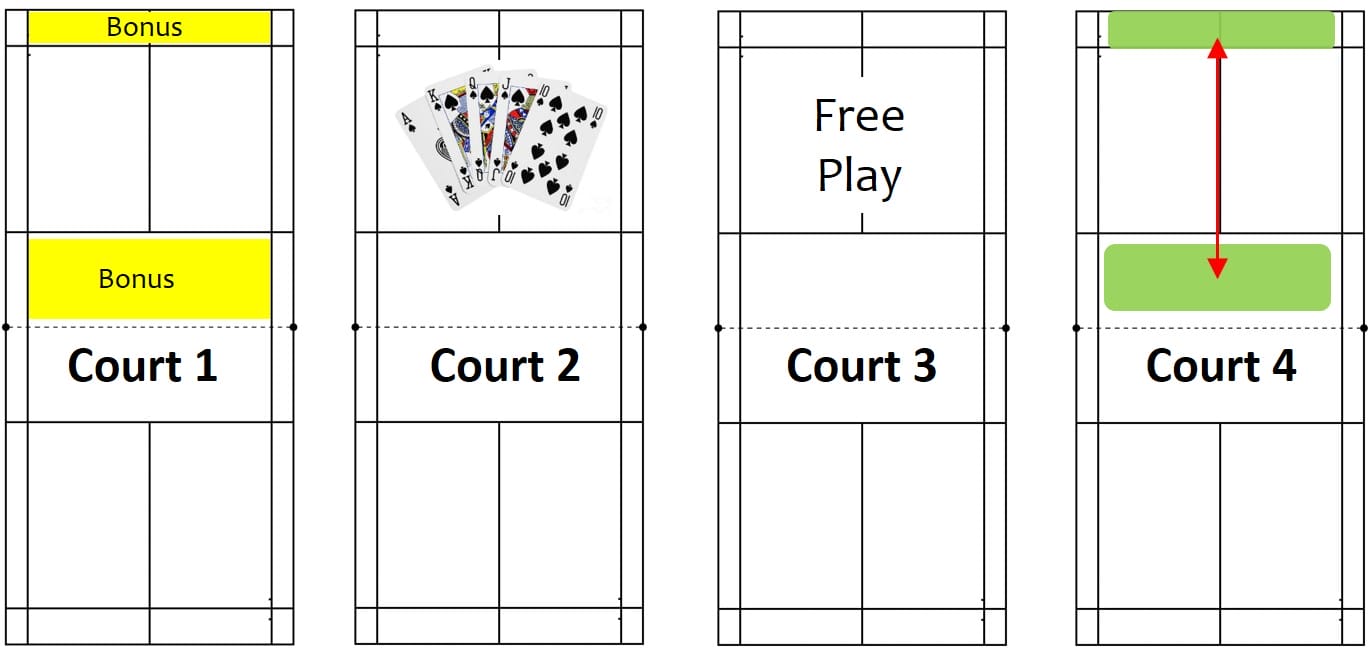
There isn’t much of a difference, it’s just the name used for the session, plus a few small changes here and there.
Even during free play sessions, I would hope that individual players have there own aims, goals and possibly even conditions concerning how they are going to play. Isn’t that normally called ‘Tactics’ 🙂
I’d prefer to use ‘Sparring’ or ‘Match play’ on the player’s weekly programme rather than Conditioned Games.
However, when coaches talk amongst themselves they may certainly ask what conditioned games they intend to include within the session. Of course, depending on the aim of the session the games may seem more or less similar to real competition.
My advice is to be aware not to stray too far away from competition and the elements of free/unrestricted competition.
Coaches: how many types of games are in your book and what multiple uses can you make of them?
– – – – – – – – – – – – – – – –
6. Why do my players not like some of the games, show resistance and argue?
This will always happen, and you need to be prepared to work through the situations
What do you think could cause upsets or arguments – be clear in your mind that you know the trigger?
You could be responsible for creating some resistance
Not all resistance from players needs to become an argument
How you handle the request/challenge will influence the value players get from the session
Could these be the triggers?
- Players will not accept anything but free play as they see no value in restrictions
- It is hard for everyone to understand the rules, the conditions – set by you
- They don’t agree with the rules – set by you
- Conditions that prevent players from winning points by ‘normal’ good play create anger and pushback – conditions set by you
- Players do not want to expose themselves to competition! – many reasons for this!
Be sensitive to the fact that all the above reasons are real to the people who express them. Although in time I’m sure you could help them change their viewpoint, hopefully.
You cannot be blind to these thoughts and just ignore any complaints. You do have to act!
** What will you do if the push-back is from your fellow coaches and organisers?
Everyone is entitled to a view, but not everyone is in charge of the session!
However, if you are in charge that doesn’t give you the right not to listen & react
– – – – – – – – – – – – – – – –
7. How do I cope with players who show resistance and argue?
If you see or hear about players or others demonstrating resistance you need to act
Plan and consider your responses. Whatever you do, your thoughts should help prepare future sessions to avoid these player pushbacks next time.
What do you think of these strategies?
- Stay cool – as the leader it’s important NOT to become aggressive and emotional. Of course, you may need to speak with authority and passion but be deliberate in your actions
- How would you react – consider if you were a player involved in the session how would you feel, do your players have something that you need to consider?
- Talk to the player(s) – remind them of the aim of the session, go back and read No. 3 above “How can I prepare so that they get the maximum from sparring?”
- Be flexible and change – maybe a change is required! Not every session has to follow your plan. It’s your plan so you can change it
- The ultimate sanction – you could remove the player from the session. Radical but a possibility!
What strategies do you use to avoid player pushbacks and arguments?
– – – – – – – – – – – – – – – –
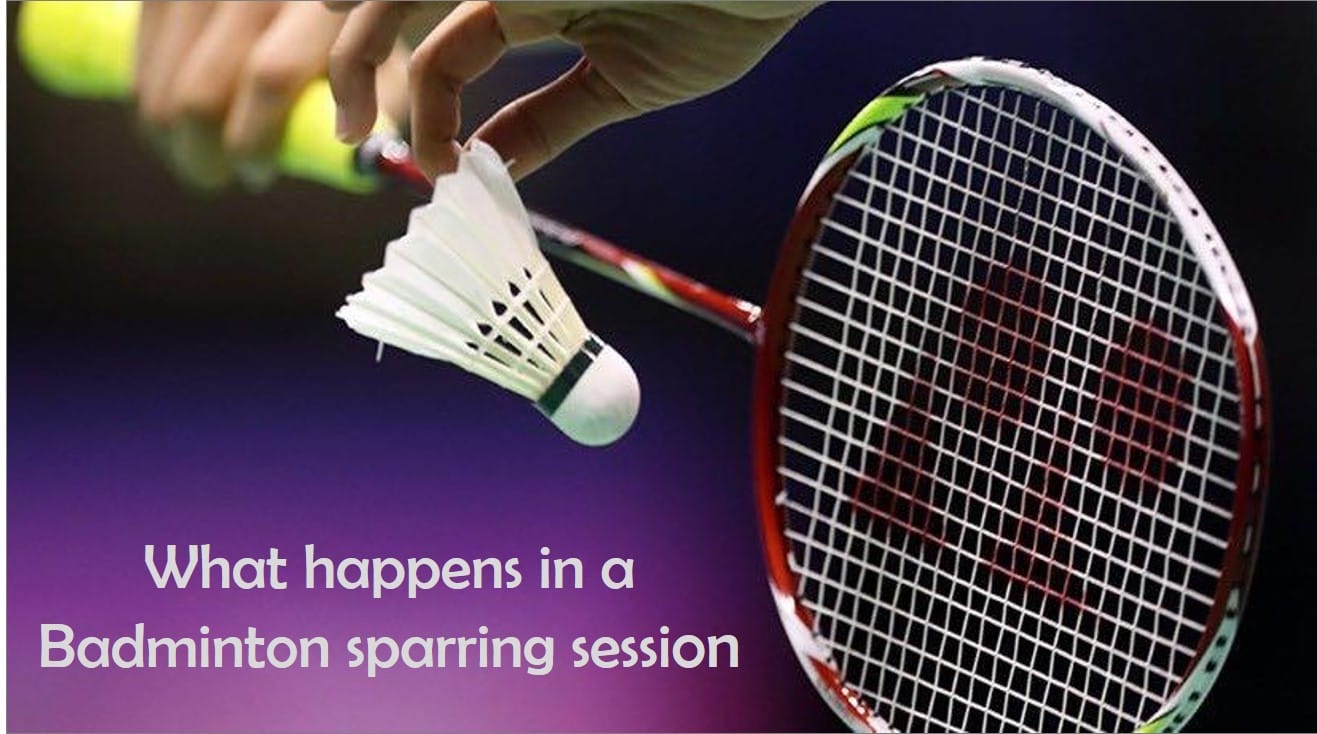
A players guide to prepare a badminton sparring session
I’ve also written this post aimed at players, how you feel if your players read it?
- What is sparring – do you know?
- It’s all about you!
- Why it’s not always about free play
- You must be able to win points
- Understand that there will be rules to help everyone
- What type of games to expect ?
– – – – – – – – – – – – – – – –
Part 2 (click to read)
8. Some of my players will not ‘compete’ in the games
9. What themes can I use in the games?
10. Why use bonus points rather than deductions?
11. What themes and rules should I avoid?
12. What rules should I include?
13. Is there a list of critical elements and questions I should be using when designing the session?
14. How much coaching should be done in a sparring session?
15 Are they any tests for the effectiveness of the sparring session?

